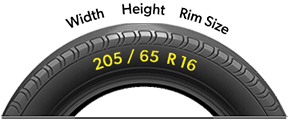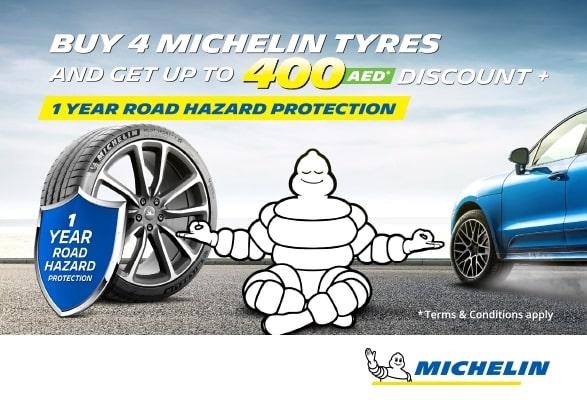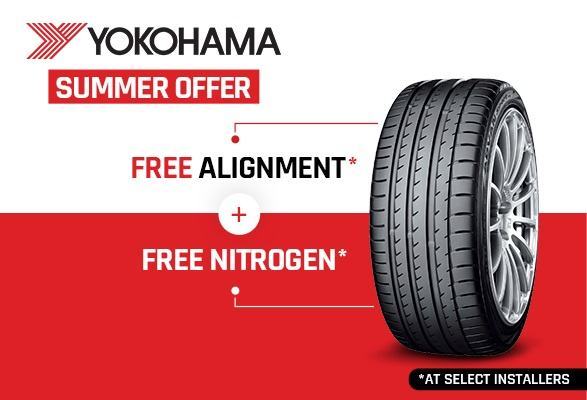Slow Punctures - Top Reasons & How to Deal with Them
We have already established that tires are amongst the most vital components in a vehicle. After all, they are the only part of the vehicle that comes into contact with the road. In addition to this, they are responsible for carrying the weight of the vehicle, acceleration, braking and so much more. Therefore, they need to be properly maintained. The air pressure needs to be at the recommended level and the tires must have adequate tread depth left.
Despite the care & maintenance, tires can get damaged due to continuous use. A puncture or sudden tire burst is quite common. But what's not common is a slow puncture. It is what makes it all the more dangerous and frustrating. In this article, PitStopArabia will talk about slow punctures, top reasons for their occurrence, and how to deal with them. Let us get started.
What are Slow Punctures?
There are two types of punctures. They are easily discernible. Imagine driving around and you hear a loud noise. The vehicle sways to one side but you manage to safely bring the car to a complete halt. You get out to inspect the vehicle and find the tire is completely deflated. This is called a sudden puncture or Car tire blowout.
On the other hand, there is a slow puncture. In it, there is no sudden burst or a loud noise. Instead, the tire deflates quite slowly. It might take several days or weeks before it is completely deflated. Often, people mistake it for low air pressure. Therefore, instead of getting the puncture repaired, they simply inflate it. The tire will start to function normally for hours or days before the air pressure drops again. By now, you begin to suspect that the tire has a small puncture.
Top Reasons for Slow Punctures?
When driving, the tire comes into contact will all sorts of debris on the road. Some of them are quite small and you might not even notice them. These small particles find their way into the tire and damage them. As they are quite small, they are unable to cause a sudden tire burst. Instead, they contribute to the slow deflation of the tire. Such damages can be easily repaired. However, if the debris has damaged the sidewall, chances of repair are considerably reduced. You might end up having to buy a new pair of tires. A faulty tire valve or damaged wheel can also cause a slow puncture.
Diagnosing a Slow Puncture?
Most modern cars have built-in tire pressure monitoring systems. Keep an eye on the system as it tells you about the air pressure in all four tires. If the pressure keeps dropping slowly in one of the tires, it is usually a sign of a slow puncture. In case your car does not have this system, you can buy a tire pressure gauge. It is quite handy and inexpensive. Measure the pressure of all four tires each day. A gradual drop would indicate a slow puncture. Besides this, you might feel vibrations in the wheel or the vehicle pulling to one side, a common sign of a punctured tire.
Now, that you know what a slow puncture is and how to diagnose it, let us take a look at how to deal with slow punctures.
Dealing with Slow Punctures
Once you diagnose a slow puncture, there are several options available. You can opt to install the spare tire. However, many people do not have a spare wheel in the trunk because it takes too much space or for several other reasons. In that case, you would surely have a tire sealant stored away. The tire sealant is a quick fix to deal with punctures. It prevents the air from escaping.
However, one needs to conduct a thorough visual inspection of the tires to understand where the leak is. Otherwise, the tire sealant is of no use. If there is no tire sealant, there are chances that you might have replaced the spare tire with a tire inflator. Also, many manufactures offer it instead of a spare tire these days. You can use it to re-inflate the tire. This will give you enough time to drive to the nearest workshop and get the tire repaired.
If you do not have any of these tools, then the best option is to call a vehicle recovery service. Many vehicle recovery services including PitStopArabia offer mobile workshop services too. This means that we can repair the punctured tire on the spot, and you can continue driving. If you feel that the tire is beyond repair, PitStopArabia also offers mobile tire delivery and installation services throughout the UAE.













































Final Thoughts
Slow punctures are quite frustrating because they are a bit difficult to diagnose. However, if you are careful and follow our guidelines, you can diagnose a slow puncture before it causes any serious damage. Lastly, always keep a spare tire, tire sealant, or tire inflator with you at all times. These tools can help you avoid any untoward situations. Thank You.